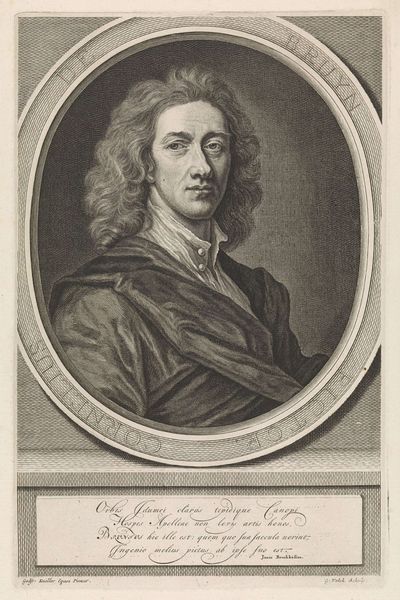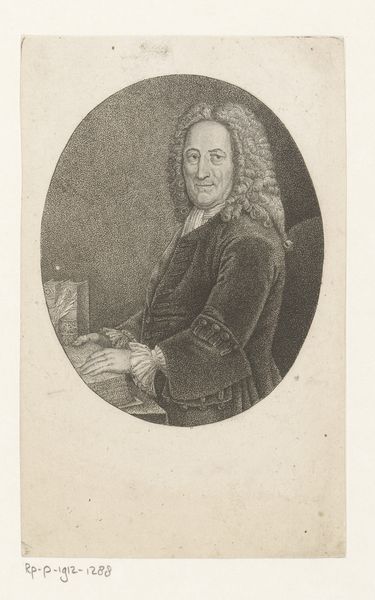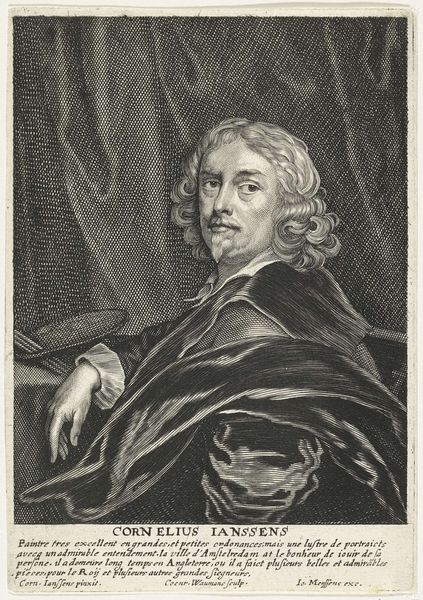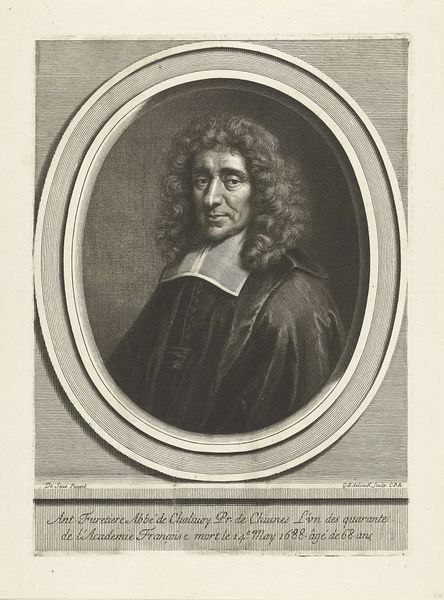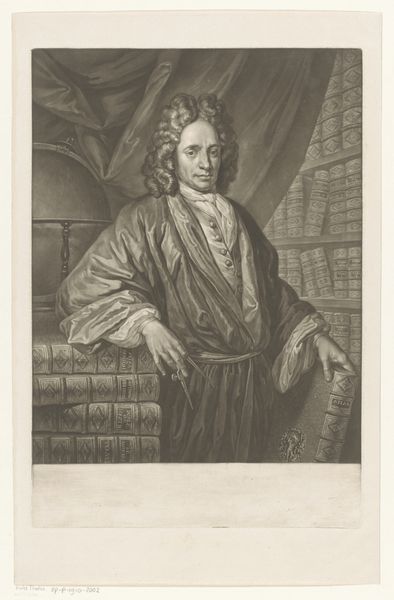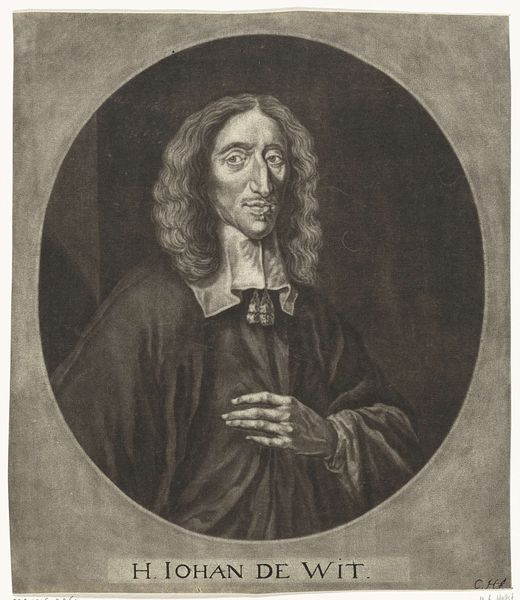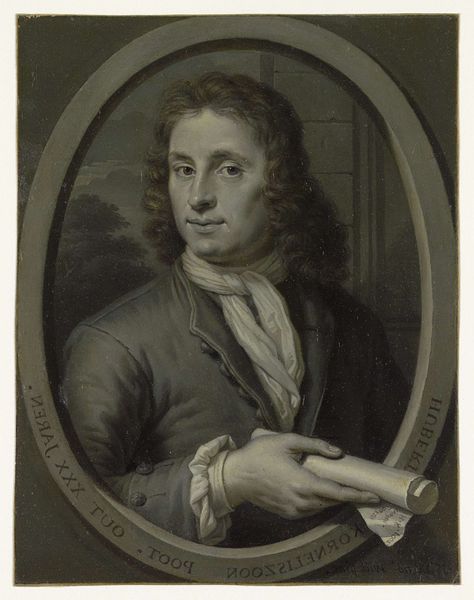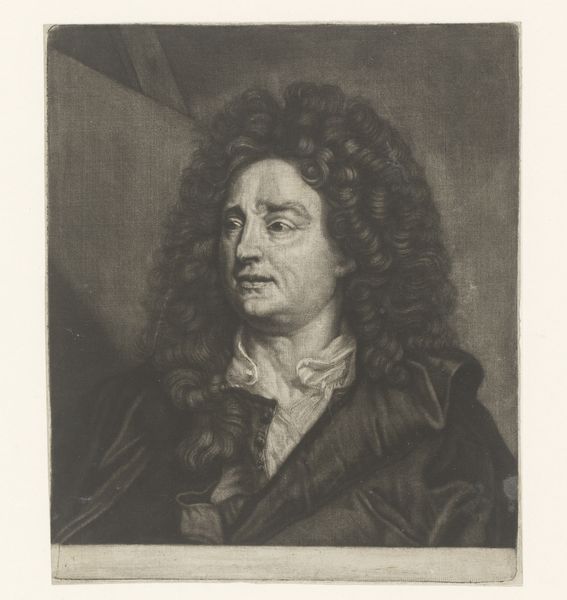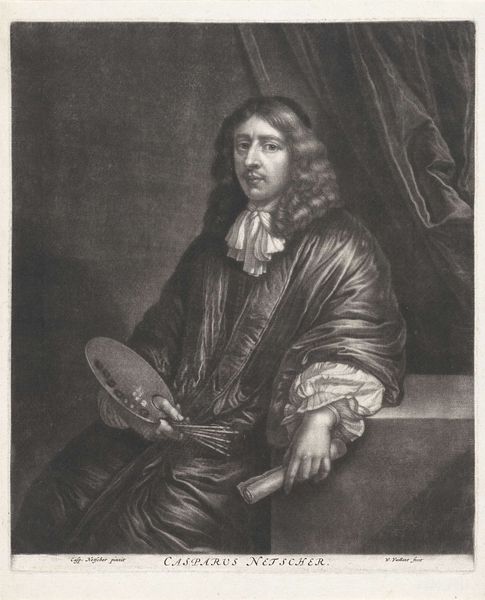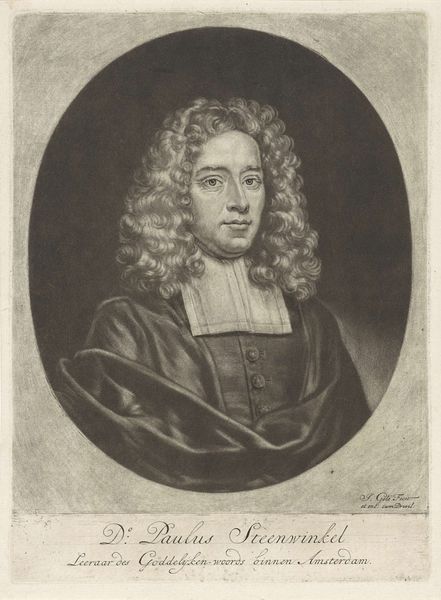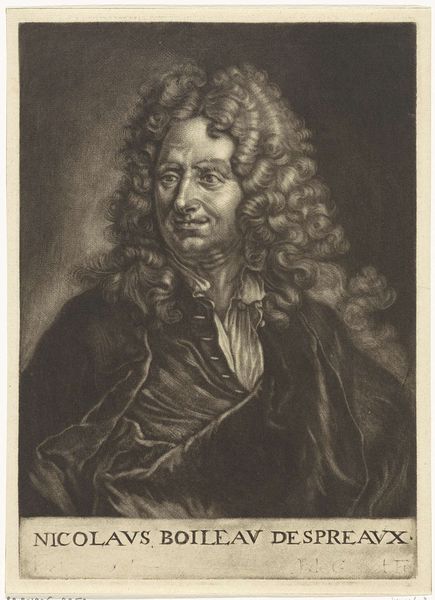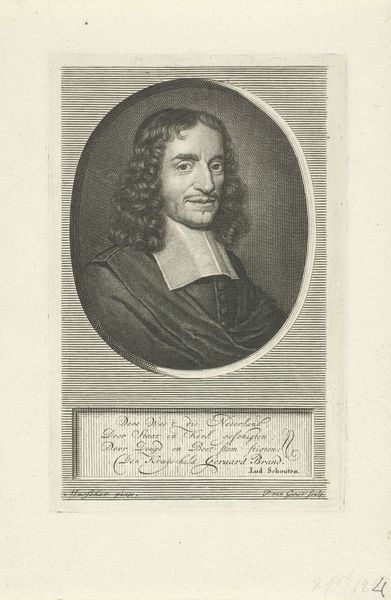
drawing, charcoal
#
portrait
#
drawing
#
baroque
#
charcoal drawing
#
charcoal
Dimensions: height 428 mm, width 315 mm
Copyright: Rijks Museum: Open Domain
Curator: Here we have a portrait rendered in charcoal, dating back to the late 17th century. It's titled "Portret van de theoloog Johannes Reelant." Editor: There’s something quite gentle in the eyes that draws me in. Though created with charcoal, which I usually associate with harsher sketches, the portrait presents a soft and reflective mood. Curator: Precisely. What we're seeing is a clear representation of baroque portraiture conventions. Artists were leaning away from stark realism and starting to idealize their subjects. Editor: Yes, that's clear. But tell me more about Reelant himself. Theologians often wield considerable social power. Curator: He was a significant religious figure in his time, his theological influence clearly reaching beyond just religious circles into everyday social frameworks of the Dutch Golden Age. These theologians would often play crucial advisory roles, linking societal structures to religious law. This artwork also tells us about how status was conveyed at the time, in carefully curated dress, poise and setting, it was imperative to convey virtue and respect. Editor: The detail in the curls of his hair is astounding for a charcoal drawing, that richness of detail, of wealth, tells us much about the position Reelant held. But I am more fascinated by what we don't see, who paid for the portrait, who was it destined for, these stories fill in some of the gaps around the subject. The shadow in the upper part feels deliberate. Curator: The use of shadow certainly adds a sense of drama, common for the period. It serves to concentrate attention on the face. Think of this from the perspective of audience and institutions, art acted as a method to solidify, communicate and scrutinize the subjects within specific social and political structures. The theologian might also wield power through his written interpretations, subtly challenging or affirming structures of power. Editor: And who are these people presented as ideal citizens, in works exhibited across city centers? It prompts critical investigation into what such representation sought to obscure or make normative in the construction of social identities. Curator: Agreed. Ultimately, art of this nature should encourage conversation beyond aesthetic appreciation. Editor: Exactly. These dialogues are crucial to understanding history's messy narratives and to question the very values they convey.
Comments
No comments
Be the first to comment and join the conversation on the ultimate creative platform.
